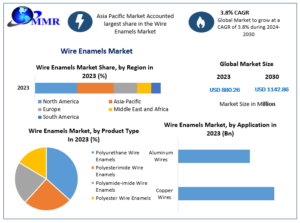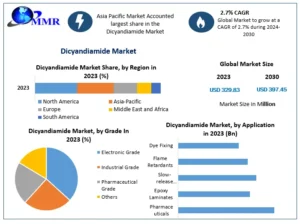Menstrual hygiene is a critical component of women’s health. A lack of proper hygiene products can lead to infections, reproductive health issues, and even societal exclusion. In many parts of the world, particularly in developing countries, girls miss school during their periods due to inadequate access to sanitary products. This leads to disruptions in education, diminished opportunities, and a cycle of poverty.
Pad companies have stepped in to address these concerns, creating solutions that not only provide basic sanitary care but also foster a more inclusive society. Through innovative design, product accessibility, and educational campaigns, these companies are making a lasting impact on women’s lives.
Evolution of the Pad Company: From Basic to Revolutionary
The origins of the pad company date back to the early 20th century, with rudimentary forms of sanitary napkins. Over time, these products have evolved dramatically, with advancements in technology allowing for better comfort, absorption, and hygiene. Initially, women had few options, often resorting to homemade solutions that were both ineffective and unsanitary.
The pad company has since taken the concept of menstrual pads to new heights. Modern pads are made using cutting-edge materials, providing superior absorption and comfort while minimizing the risk of infections. Today’s companies are investing heavily in research and development to produce hypoallergenic pads, reduce environmental impact, and cater to diverse needs, such as night pads, maternity pads, and ultra-thin variants.
Key Features of Modern Pad Companies
- Sustainability Initiatives
One of the most pressing issues facing the pad company today is environmental sustainability. Traditional pads often contain plastic components that are not biodegradable, contributing to pollution. As awareness of environmental issues grows, many companies have turned to eco-friendly materials. Biodegradable and reusable pads are now becoming more popular, and some companies even offer compostable options.Brands like Natracare and Organyc have embraced organic and biodegradable materials, reducing the environmental footprint of their products. These pads use natural cotton and plant-based materials, avoiding the use of harmful chemicals or synthetic fibers. Such initiatives align with the global shift toward sustainability, catering to eco-conscious consumers.
- Innovative Design and Technology
Pad companies are no longer just focused on absorption. Comfort, discretion, and adaptability have become paramount. Modern designs incorporate features like breathable layers, adhesive wings to keep the pad in place, and odour control technology to ensure a fresh feeling throughout the day.Companies such as Always and Whisper have introduced ultra-thin and flexible pads that provide superior protection without feeling bulky. This level of innovation has revolutionized the market, making it easier for women to carry on with their daily activities without worrying about discomfort or leakage.
- Inclusivity and Accessibility
Another hallmark of the modern pad company is inclusivity. Companies are now catering to diverse demographics, ensuring that women of all ages, sizes, and economic backgrounds have access to sanitary products. In developed nations, this has led to the introduction of various pad sizes and absorbency levels. However, in developing countries, the focus is often on affordability and accessibility.Companies like Sathi Pads in India and Afripads in Uganda are addressing the needs of underserved populations. These companies produce low-cost, reusable pads for women in rural and impoverished areas, helping to combat period poverty. By offering affordable products and partnering with local organizations, these pad companies ensure that menstruation does not hinder a girl’s ability to attend school or participate in community life.
- Education and Awareness Campaigns
Pad companies are not just about selling products; they are also at the forefront of driving awareness and education. They recognize that many women, particularly in low-income communities, have little to no knowledge about menstrual health. This lack of awareness can perpetuate taboos and lead to poor hygiene practices.Companies such as Always have launched global campaigns to destigmatize menstruation. Their initiatives often include educational workshops, television advertisements, and partnerships with schools and NGOs. By promoting open dialogue and dispelling myths, pad companies are changing societal perceptions of menstruation and empowering women to take control of their health.
The Role of Technology in Shaping the Future of Pad Companies
Technological advancements have played a pivotal role in the transformation of the pad company. From product design to production methods, technology is enabling these companies to cater to the diverse needs of their consumers. Here are some key areas where technology is making a difference:
- Smart Menstrual Products
In an era of smart technology, pads are also getting an upgrade. Some companies are experimenting with smart menstrual products, which track flow levels and send alerts to users. These products can help women manage their periods more effectively by predicting when they will need to change their pads. Although still in the experimental stage, these innovations represent a leap forward in menstrual hygiene management. - Advanced Absorption Technology
Absorption capacity has always been a key feature of any sanitary pad. However, today’s pads use advanced materials such as superabsorbent polymers that can hold several times their weight in liquid. This ensures that pads remain dry for longer periods, reducing the likelihood of discomfort or leakage. The innovation in materials has also led to thinner, more comfortable pads that are virtually undetectable when worn. - Biodegradable Materials
Technology has enabled pad companies to explore biodegradable alternatives to traditional plastic-based pads. Using plant-based materials, companies are developing pads that decompose within months rather than centuries. These products not only benefit the environment but also cater to consumers who prefer eco-friendly options. For example, companies like Lunapads and GladRags offer cloth-based, washable pads that are designed for long-term use, reducing waste significantly.
The Impact of Pad Companies on Global Health
The contributions of pad companies extend far beyond product innovation. By ensuring that women have access to clean, reliable menstrual hygiene products, these companies are positively impacting global health outcomes. In particular, they are helping to reduce the incidence of reproductive health problems linked to poor menstrual hygiene, such as infections and pelvic inflammatory diseases.
Moreover, pad companies are improving the quality of life for women and girls worldwide. In developing countries, their efforts to provide affordable sanitary products help reduce absenteeism in schools and the workplace. This, in turn, empowers women and girls to pursue education and employment opportunities without interruption.
Challenges and Future Opportunities
While the progress made by the pad company is commendable, several challenges remain. Period poverty continues to affect millions of women around the world, particularly in developing nations where sanitary products are still seen as a luxury rather than a necessity. Governments, NGOs, and private companies need to collaborate further to address this issue.
Additionally, while many pad companies are adopting sustainable practices, the industry still has a long way to go to minimize environmental impact. Scaling up the production of biodegradable pads and increasing consumer awareness about eco-friendly alternatives will be key in the years ahead.
The pad company has evolved significantly over the years, from offering basic menstrual hygiene products to transforming the landscape of women’s health. These companies are now playing a critical role in not only providing safe and effective sanitary products but also in driving conversations about menstrual health and breaking taboos associated with menstruation. This article explores the innovations, challenges, and societal impact of pad companies, while also diving into the future potential of these organizations to continue revolutionizing women’s health globally.
A Historical Perspective: From Cloths to Modern Pads
The journey of pad companies began in the late 19th and early 20th centuries when women primarily relied on reusable cloths to manage their menstruation. These methods were unhygienic and uncomfortable. It wasn’t until the early 1920s that the first disposable sanitary pads hit the market, with companies like Kotex leading the charge. These early pads were a significant leap forward but were far from perfect in terms of comfort, absorbency, and convenience.
As the demand for better menstrual care products grew, pad companies began investing in research and development. By the 1970s, adhesive strips and winged designs were introduced, drastically improving comfort and ease of use. Today, pad companies use cutting-edge technology to offer a wide range of products that meet the needs of women worldwide. From ultra-thin pads to biodegradable options, the variety of products reflects the increasing focus on personalized care.
Key Innovations by Pad Companies
- Customizable Fit and Comfort
One of the most significant improvements in menstrual pads is the emphasis on customization. Modern pad companies have moved away from the one-size-fits-all model, offering a variety of pad lengths, thicknesses, and absorbency levels to suit different needs. This ensures that women can choose a product tailored to their flow, body type, and lifestyle.Companies such as Always and Stayfree have introduced products that mold to a woman’s body for superior comfort. Pads now include features like gel cores, flexible materials, and breathable layers, ensuring they remain secure and comfortable, no matter the activity.
- Sustainable and Eco-Friendly Pads
With environmental concerns on the rise, many pad companies are turning to sustainable manufacturing methods and materials. Traditional sanitary pads take hundreds of years to decompose, as they are made using plastic components and synthetic fibers. Eco-conscious consumers are increasingly seeking alternatives, and pad companies have responded by creating biodegradable and reusable options.Brands such as Saathi and Eco Femme are leading the charge in creating pads made from plant-based, biodegradable materials. These companies use bamboo fiber, banana fiber, and organic cotton, which break down much faster than conventional materials. This shift not only reduces environmental impact but also offers a chemical-free alternative to those sensitive to synthetic materials.
- Pads for Every Stage of Life
Modern pad companies now offer specialized products for women at different stages of life. From adolescent girls to women going through menopause, there are pads designed to address the specific needs of each phase. For example, companies now offer teen-specific products that are designed to be discreet and easy to use, helping young girls navigate their first menstrual experiences with confidence.Additionally, maternity pads have become an essential product for postpartum care. These pads offer higher absorbency levels and are designed to be gentle on sensitive skin. Companies such as Mothercare and Frida Mom cater to the postpartum needs of new mothers, ensuring comfort and protection during recovery.
- Menstrual Health Education and Corporate Social Responsibility
Many pad companies have taken up the cause of menstrual health education. In regions where period stigma remains a major issue, these companies are partnering with governments and non-profits to distribute products and raise awareness. Pad companies are not just selling products; they are educating women and girls about menstrual health, hygiene, and the importance of regular care.For example, Procter & Gamble’s Always brand launched its global “#LikeAGirl” campaign to empower young women to feel confident about their periods and challenge outdated gender stereotypes. In India, companies like Whisper have been involved in promoting period literacy through community outreach programs, ensuring young girls understand menstruation and have access to quality products.
The Rise of Reusable Pads and Menstrual Cups
As sustainability becomes a critical concern, reusable pads and menstrual cups are becoming a viable alternative for women. Many pad companies have expanded their product lines to include these options, particularly in areas where access to disposable products is limited or where environmental concerns are at the forefront.
Lunapads and GladRags are two companies that have pioneered the reusable pad movement. These cloth pads are washable and durable, offering years of use and significantly reducing waste. Reusable products, while initially a larger investment, prove to be more cost-effective over time and are ideal for women looking to reduce their environmental footprint.
Meanwhile, the menstrual cup market, often championed by companies that also produce pads, is growing rapidly. Companies like DivaCup offer an alternative to traditional pads and tampons, with menstrual cups being reusable for several years. This innovative product is especially popular among environmentally-conscious women and those who prioritize long-term cost savings.
Challenges Faced by Pad Companies
Despite the progress made in the industry, pad companies face several challenges in expanding their reach and ensuring menstrual equity for all women.
- Period Poverty
Period poverty—the lack of access to sanitary products, menstrual hygiene education, and waste management—continues to affect millions of women and girls globally. In developing countries, many girls still miss school during their periods due to a lack of adequate menstrual products. This has long-term consequences on their education, self-esteem, and future economic prospects.While pad companies are working on providing affordable products, bridging the gap in accessibility remains a challenge. Many low-income women and girls cannot afford to buy sanitary products regularly, relying on makeshift alternatives like rags, which can lead to health issues. Governments, non-profits, and pad companies need to work collaboratively to ensure free or subsidized pads are available to those in need.
- Environmental Impact
Although some pad companies are focusing on eco-friendly options, the vast majority of products still contribute to environmental pollution. Traditional disposable pads contain plastics, which take hundreds of years to break down. As pad companies expand, there is growing pressure to develop products that are both effective and environmentally sustainable.Addressing these environmental concerns while maintaining affordability is an ongoing challenge. Biodegradable and organic products are often more expensive, making them less accessible to lower-income women.
Future Directions for Pad Companies
As the industry continues to evolve, pad companies are exploring new frontiers. In addition to technological advancements, there is a growing focus on:
- Affordable Menstrual Products
Providing cost-effective menstrual products remains a top priority for many companies, particularly in regions experiencing period poverty. Innovations like SHE’s biodegradable banana fiber pads in Rwanda and Sathi’s plant-based pads in India are making waves by providing affordable alternatives that are eco-friendly. - Breaking the Menstrual Taboo
Pad companies are increasingly involved in breaking the stigma surrounding menstruation through public education campaigns. These campaigns emphasize that menstruation is a normal biological process and not something that should be associated with shame or embarrassment. As more celebrities and influencers join the conversation, menstruation is slowly becoming less of a taboo topic, and pad companies are using this momentum to further their cause. -
Research and Development for Comfort and Health
Future innovations will likely focus on further improving comfort, health, and environmental impact. Companies are researching new materials that offer superior protection while being gentle on the skin and friendly to the planet. Additionally, some companies are working on antibacterial and antifungal properties to help prevent infections and improve overall menstrual health.




